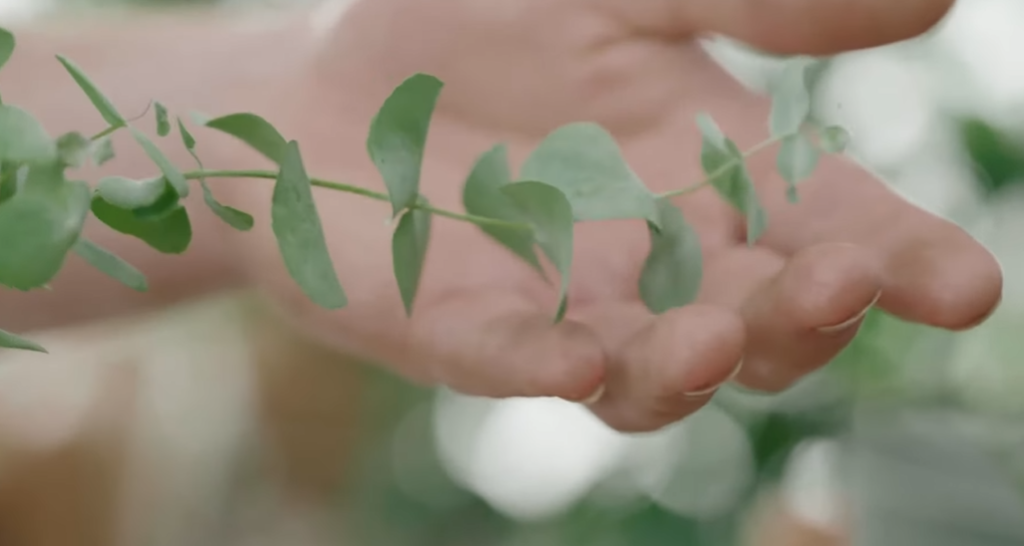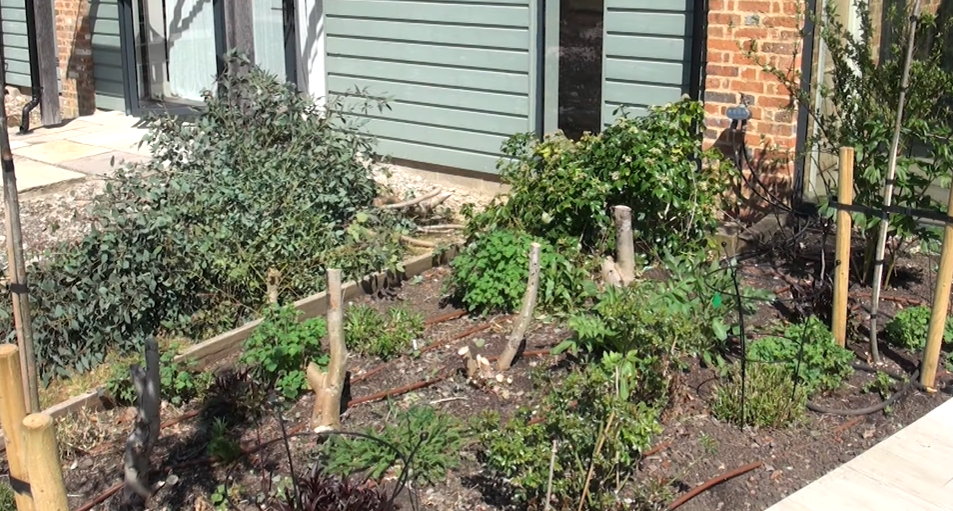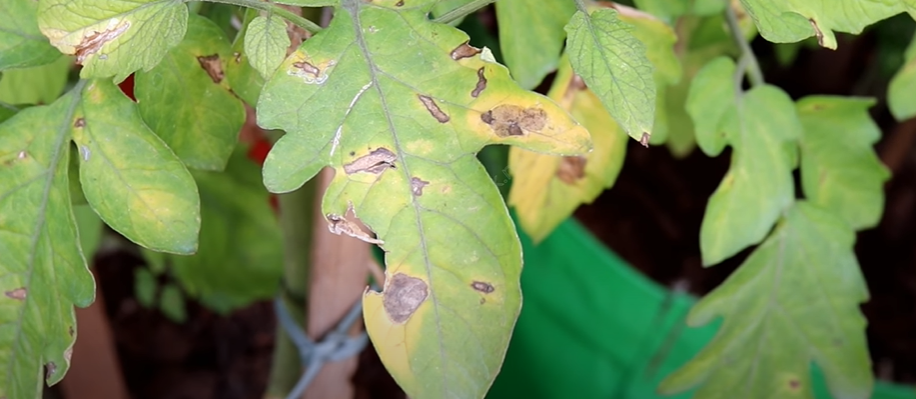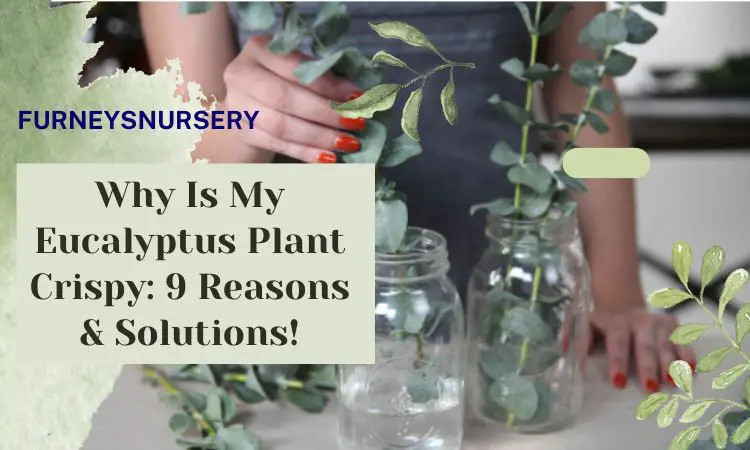Your eucalyptus plant can become crispy due to several issues. Insufficient watering and over-watering can cause this problem. Moreover, excess sunlight & low humidity also make the eucalyptus plant crispy. Low-quality soil & pest infestations can also be the reason behind a crispy eucalyptus plant.
These are just some of the few answers to why is my eucalyptus plant crispy. I have discussed everything you need to know on this matter below. So keep reading!
Contents
- 1 Why Is My Eucalyptus Plant Crispy: At A Glance
- 2 Why Is My Eucalyptus Plant Crispy: Detailed Solutions
- 3 Tips on Maintenance of Eucalyptus Plant
- 4 Conclusion
Why Is My Eucalyptus Plant Crispy: At A Glance
Several reasons can make the Eucalyptus plant crispy. Look at the table below to know the basic reasons and solutions to this issue.
| Problem | Solution |
| Insufficient Watering | Supply Adequate Water |
| Excess Sunlight | Place The Plant in The Correct Place |
| Low Humidity | Mist The Leaves |
| Poor Draining | Ensure Enough Draining Facility |
| Excess Cold Temperature | Bring The Plant Indoor |
| Pest Infestations | Use Insecticides |
| Over Watering | Water The Plant in the Right Amount |
| Bad Soil Quality | Ensure the Correct pH of The Soil |
| Nutrients Deficiency | Use Necessary Fertilizers |
Why Is My Eucalyptus Plant Crispy: Detailed Solutions
Just like growing chives from cuttings, you will need detailed information to fix your crispy eucalyptus plant. Make sure to go through all the points to mend your eucalyptus plant without unnecessary hassles.
Insufficient Watering:
Water is an essential element for eucalyptus plants. Eucalyptus plants need regular watering. Especially during dry periods, they need more water. Otherwise, the soil becomes too dry. As a result, the leaves can become crispy.
Solution:
The solution to this problem is straightforward. You have to water the plant regularly. However, you can follow the below-given steps to ensure enough water for your eucalyptus plant.
- Make sure to check the moisture level of the soil regularly. Insert a finger into the soil up to an inch deep. Water if the soil feels dry.
- Follow a consistent watering schedule. Watering in the morning helps the plant absorb moisture before the day’s heat.
- Water the plant deeply so that water gets inside the soil up to the root.
Excess Sunlight:
Eucalyptus plants thrive in a sunny location with good air circulation. Water gets out of the plant quickly. Thus the leaves become crispy in extreme temperatures.
Solution:
Ways to prevent excess sunlight for eucalyptus plants:
- Plant eucalyptus in a place that receives partial sunlight or shade. This can be achieved by strategic planting. Keeping the plant near taller plants or structures can be helpful in this case.
- You can install a shade cloth over the eucalyptus plant. This will filter the sunlight falling on it.
- Adjustable awnings can provide shade to the plant according to need. These awnings can be moved or adjusted to control the flow of sunlight.
- Place the eucalyptus where it receives morning sunlight. This light is usually less intense and causes no damage.
Low Humidity:
Eucalyptus plants require a moderately humid environment. They can not cope with a place where the humidity is low. This type of environment can result in dry leaves.

Solution:
You can deal with low humidity of eucalyptus plants in the following ways.
- Mist the leaves of your eucalyptus plant regularly with water. This is a quick step to increase the humidity around the plant.
- Install water trays filled with pebbles near the eucalyptus plant. The water will enhance the humidity of the surroundings by evaporating with time.
- You can plant bigger trees near the eucalyptus that release water through transpiration.
- Install a humidifier if the eucalyptus is planted indoors.
Poor Draining:
Water clotting is a very dangerous phenomenon for the eucalyptus plant. This problem arises due to a poor drainage system.
The clotted water can rot the root of the plant. This situation can also result in nutrient imbalance and oxygen deprivation. The plants’ growth can stop and the leaves can dry up because of water clogging.
Solution:
Preventive measures for water clogging are given below.
- Plant eucalyptus in well-draining soil. This type of soil ensures that excess water doesn’t get stuck around the roots.
- Sometimes the existing soil of the eucalyptus can be the problem. You can increase its water-draining capability by adding organic materials like sand or perlite.
- Raised beds provide better drainage. So plant the eucalyptus in raised beds.
- Do not overwater the plant.
- Inspect the soil regularly to ensure proper drainage facility.
Excess Cold Temperature:
Eucalyptus plants are quite sensitive to cold. The leaves can frost in extremely cold weather. Moreover, excessively low temperatures can restrict the plant’s growth and affect its overall health.

Thus the leaves become yellow and dry up in too cold of an environment.
Solution:
The following steps are useful to protect the eucalyptus plant from cold weather.
- Plant eucalyptus in a place safe from cold winds.
- Applying a thick layer of mulch around the base of the eucalyptus protects the roots from cold temperatures.
- Cover young eucalyptus plants with blankets or frost cloth during extreme cold weather.
- Make sure to keep the eucalyptus hydrated before the cold weather arrives. Hydrated soil retains more heat than dry soil.
Pest Infestations
Similar to other plants, pests are very harmful to eucalyptus too. They damage the leaves and reduce flower production of the plant. The leaves become crispy and yellow.

Eucalyptus roots can be affected by pests too. Different diseases are also spread by pests.
Solution:
You can prevent or get rid of pests from your eucalyptus plants in the following ways.
- Regularly inspect the eucalyptus plants’ pest infestation signs. The earlier you detect the problem, the more easily you can get rid of the pests.
- Natural predators like ladybugs, lacewings, and beneficial wasps can help control pests. So do not kill these insects.
- Prune heavily infested parts of the eucalyptus plant. This will reduce pest numbers and control the spread of pests.
- Using insecticidal soaps can be effective in removing pests. They are environmentally friendly and do not affect the plant’s health. Neem oil is also useful in dealing with pests.
- Chemical insecticides can be used if the pest infestation is severe. However, follow the recommended guidelines while using chemical insecticides.
- Maintain proper spacing between eucalyptus plants. Also, avoid over-fertilization. These practices help to prevent pests.
Excess Watering:
Just like under-watering, over-watering also causes several problems in eucalyptus plants. Root rotting, less oxygen uptake, and yellow leaves are the result of over-watering.
Solution:
The overwatering problem can be fixed by the following steps.
- Plant eucalyptus in well-draining soil.
- Develop a watering schedule for the eucalyptus plant.
- Apply a layer of mulch around the base of the plant. This helps to retain soil moisture.
Bad Soil Quality:
Soil quality is a very important aspect of the eucalyptus plant just like growing ginseng indoors. The pH of the soil determines its quality. Low-quality soil can cause nutrition deficiency in the plant. This can ultimately result in crispy leaves.
Moreover, the water-draining capability of the soil is affected by its quality.
Solution:
The ideal pH range for eucalyptus plants is between 6 to 7.5. You can follow the below-given steps to ensure this pH.
- Add lime to the soil if its pH is lower than 6.
- If the pH exceeds 7.5, use elemental sulfur in the soil.
- Do not try to change the pH of the soil overnight. Rather gradually increase or decrease the pH.
Nutrient Deficiency:
Eucalyptus leaves can dry up and become crispy because of nutrition deficiency. A deficiency of nitrogen, phosphorus, potassium, iron, and other minerals can cause this issue.
Solution:
Test the soil to find out its composition. Then apply a balanced fertilizer with the necessary nutrients.
Tips on Maintenance of Eucalyptus Plant
Similar to growing jalapenos in a pot, regular maintenance is necessary for a healthy eucalyptus plant h. Here are some tips for maintaining eucalyptus plants.
- Perform regular visual inspections of your eucalyptus plants. Make sure to test the leaves, stems, and overall plant. Check for any signs of discoloration, pests, and diseases.
- Monitor the color and condition of the leaves.
- Periodically analyze the soil to assess its pH and nutrient levels.
- Check out the soil moisture by sticking your finger into the soil up to an inch deep. Then adjust your watering schedule based on the moisture level.
- Keep a close eye on your eucalyptus plants for pests or diseases. Early detection allows for fast intervention.
Conclusion
This is all on your query why is my eucalyptus plant crispy? Now find out the reason causing this issue and take the necessary steps!
A garden is a place that relaxes us and reflects our personal style, it’s a place to spend time with loved ones and grow our own fruits and vegetables. Maybe you’re looking for design inspiration or plant selection, or you’re concerned about garden privacy, shady areas, or pests, but don’t worry, you’ve come to the right place.
